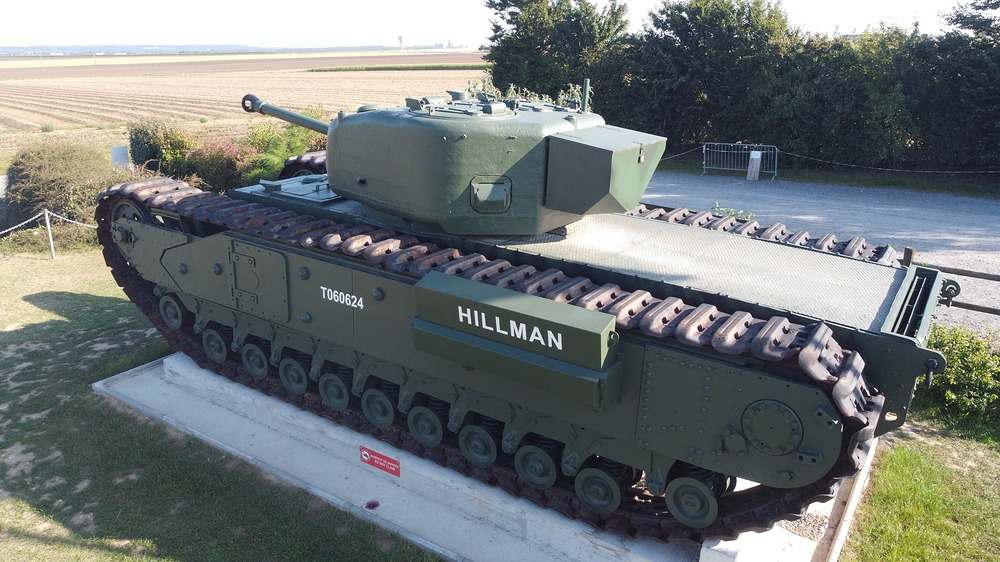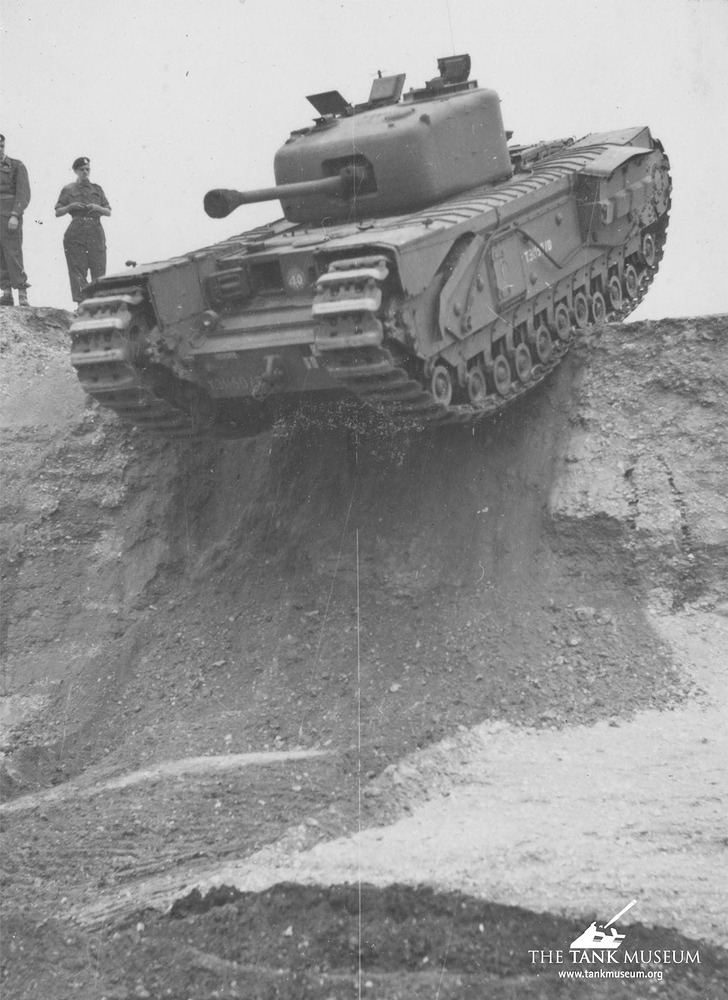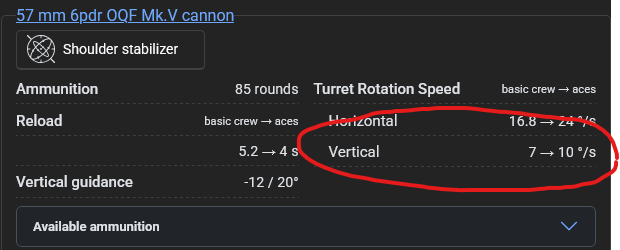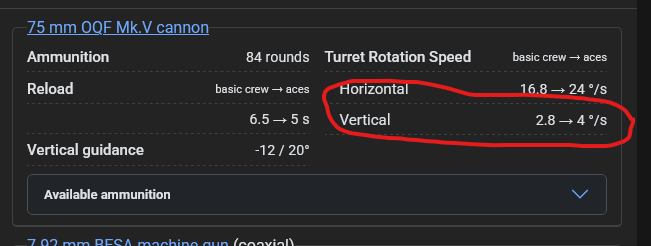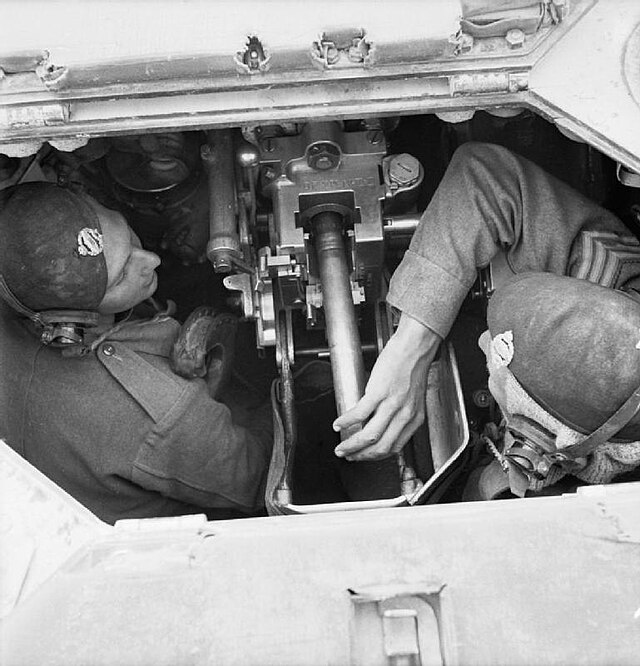- Yes
- No

History
Carried out in North Africa, an unofficial rearmament program was created to get a 75mm into a Churchill in order to provide improved HE performance over the 6pdr armed tanks and earlier 3-inch howitzer. The 75s were salvaged from damaged and knocked out Shermans and once the first conversion was completed, proving its viability and effectiveness, official backing was given to convert more of them. Known as the NA75, 200 or so ended up being converted.
However, there was another program to rearm the Churchill with a 75mm gun that was official from the beginning.
Working from the 6pdr, and using American 75mm ammunition, Vickers-Armstrong were able to create the ROQF 75mm Mk. V and priorities were given for which vehicles would be the first to receive it. Churchills were given precedence, followed by the Cromwell, Centaur, Valentine, and then the armoured cars and other armoured vehicles. As well as going into new Churchill designs, it was decided that a number of Mk. IIIs and IVs would have their 6pdrs swapped out for the 75mm (either the Mk. V or the Mk. VA with the counter-weight behind the muzzle brake).
242 Mk. IVs were converted and became simply known as the Mk. IV (75mm). Seeing service in the North-West European Campaign from D-Day to VE-Day, they were used by 6th Guards Tank Brigade, 31st Tank Brigade, and 34th Tank (later Armoured) Brigade. Some of them may have also gone to 79th Armoured Division as support and Command tanks for their Crocodiles and AVREs.
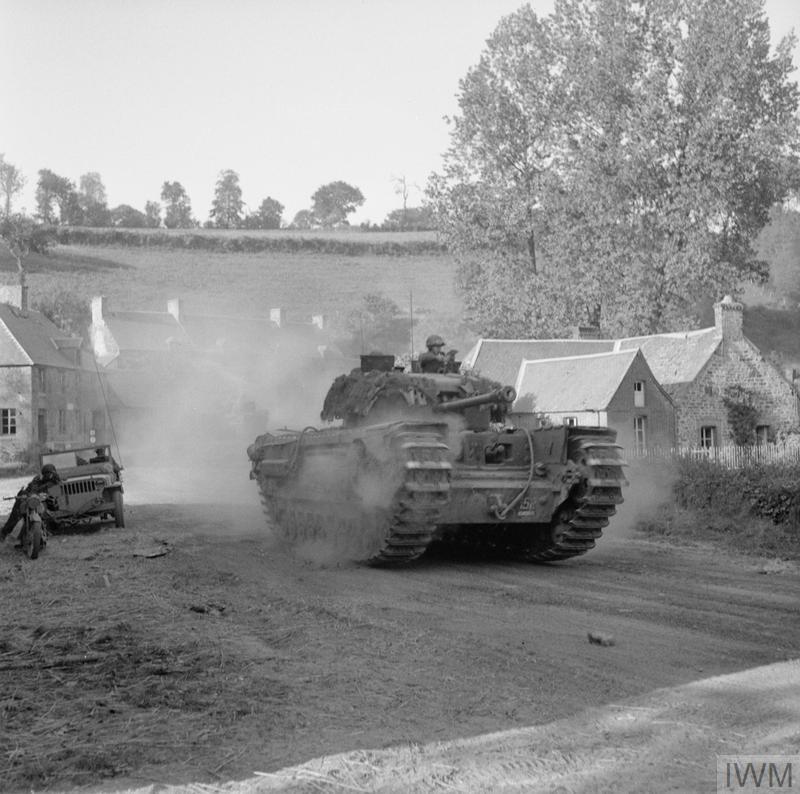
A Churchill tank of 4th Grenadier Guards, 6th Guards Tank Brigade, in the village of Cathéolles, moving forward towards Vassy in Normandy, 4 August 1944. - IWM (B 8597)
Throughout the Campaign the 75s provided valuable support with their superior HE while the 6pdrs could take on enemy armour with their higher velocities and especially with the APDS once that was introduced. As such, the 75s and 6pdrs in the Churchill Troops were not too dissimilar to the 75s and 17pdrs in the Sherman and Cromwell Troops and, though the 6pdr had reduced performance compared to the 17pdr of the Fireflies and Challengers, this was offset by often having M10-equipped (both 3-inch and 17pdr) Anti-Tank Regiments attached to the Churchill units to provide heavy AT support.
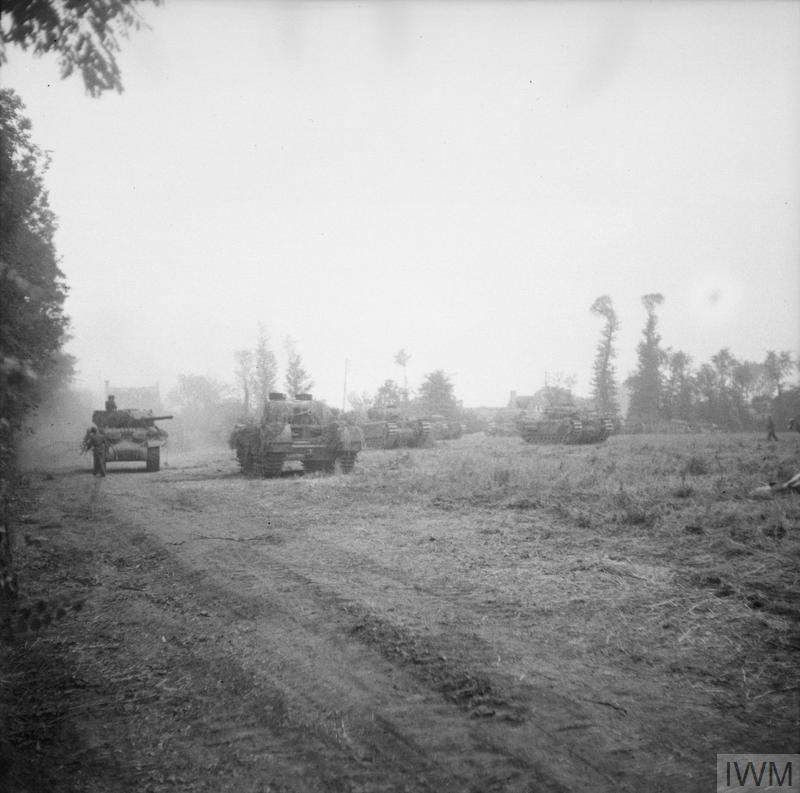
Churchill tanks of 31st Tank Brigade prepare for an assault on Hill 113 in the Odon Valley during Operation Jupiter, Normandy, 15 July 1944. On the left is an M10 SP, possibly of 349 Battery, Royal Artillery, which was attached to 31st Tank Brigade at this time. - IWM (B 7434)
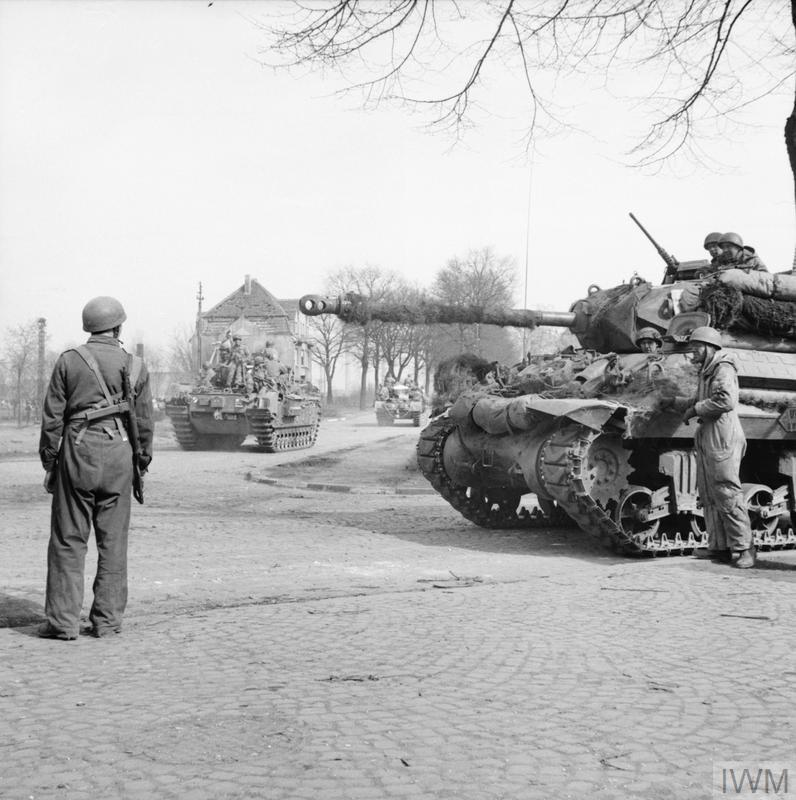
Churchill tanks of 6th Guards Tank Brigade carrying paratroopers from the American 17th Airborne Division pass through Dorsten in Germany, while an Achilles SP waits, 29 March 1945. - IWM (BU 2740)
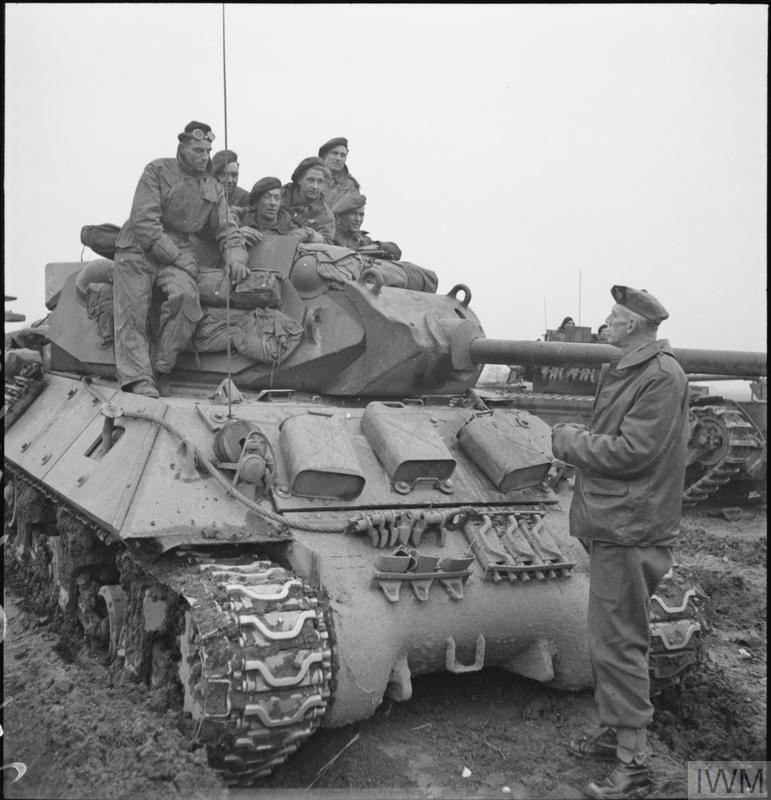
Major-General C M Barber, GOC of 15th (Scottish) Division in conversation with the crew of an Achilles 17-pdr SP near Goch, 20 February 1945. - IWM (B 14769)
In-game
I think the Mk. IV (75mm) could fit in at 3.7 as it’s fairly comparable in armour and firepower to the KV-1 (L-11) and the ARL-44 (ACL-1). I’ve put it below the NA75 as that has a slightly better armour profile on the turret front with the added on Sherman mantlet and has HE filler in its M61 APCBC giving its 75mm M3 better post-pen effectiveness than the Mk. V.
A possible researchable modification for the Mk. IV (75mm) would be to add on the 20mm thick applique plates which were added onto the hull sides of some tanks giving a very useful survivability bonus. This applique armour can be seen on the Mk. III AVRE that’s already in-game.
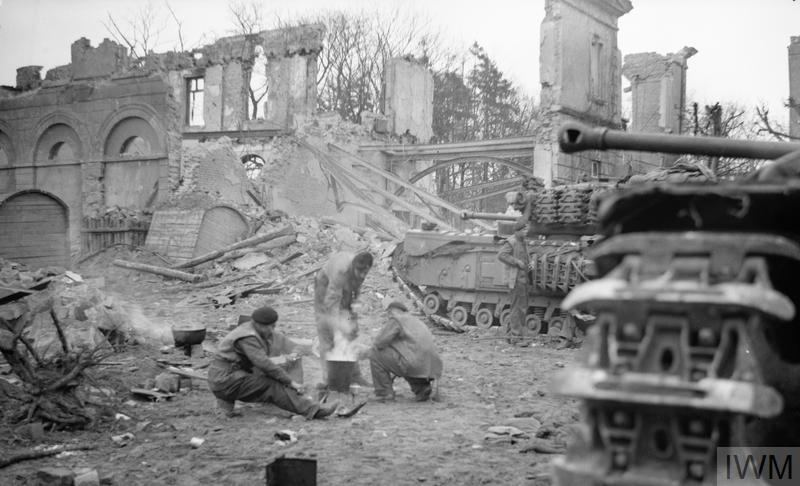
Churchill tanks and crews of 6th Guards Tank Brigade in the ruins of Dulmen, 30 March 1945. - IWM (BU 2765)
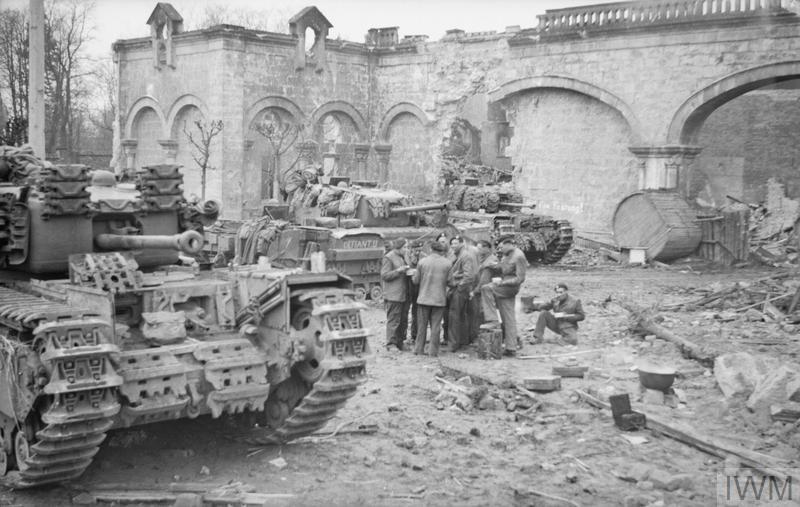
Churchill tanks of 6th Guards Tank Brigade in Dulmen, Germany, 30 March 1945. - IWM (BU 2766)
L to R - Mk. IV (75mm), Mk. VI, and Mk. IV
Specifications
Crew - 5
Weight - 39t
Length - 24’-1”
Width - 9’-5”
Height - 8’-2”
Engine - Bedford Twin-Six 12-cylinder (350hp)
Max speed - 17.4mph
Armament
ROQF 75mm Mk. V or VA (counter-weight behind muzzle brake)
2xBESA 7.92mm MG
Max elevation/depression - +20/-12.5
Ammunition
Around 80-85 shells
9,450 7.92mm BESA rounds
Figures taken from War Thunder Wiki
Armor penetration (mm) at a distance:
10m / 100m / 500m / 1000m / 1500m / 2000m
M72 - AP: 91 / 88 / 78 / 67 / 57 / 49
M61 - APCBC: 103 / 100 / 89 / 77 / 66 / 57
M48 - HE
M89 - Smoke
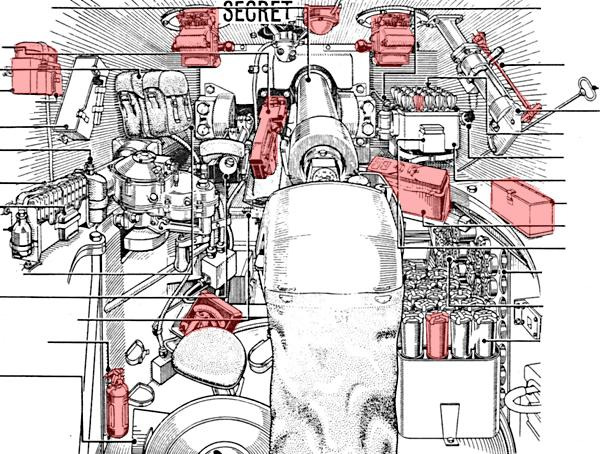

Armour
Lower Hull Nose - 76.2mm
Upper Hull Nose - 38mm
Hull Front - 89mm
Hull Sides Upper - 50.8mm
Hull Sides Lower - 63.5mm*
Hull Side Doors - 76.2mm
Hull Rear Upper - 50.8mm
Hull Rear Lower - 25.4mm
Hull Roof - 19.05mm
Engine Deck - 15.88mm
*Some received additional 20mm applique plates on the hull sides
Turret Front - 89mm
Turret Sides - 76.2mm
Turret Rear - 76.2mm
Turret Roof - 30mm
(Variable due to casting)
Images
NOTE - Some period pictures may be Mk. VIs rather than Mk. IV (75mm). Telling them apart externally is very difficult and made harder with spare track, infantry, and other extra bits blocking the full view of the turret. I’ve done my best to only use photos of Mk. IV (75mm).

Churchill tanks of ‘B’ Squadron, 107th Regiment Royal Armoured Corps, 34th Tank Brigade, 17 July 1944. - IWM (B 7641)
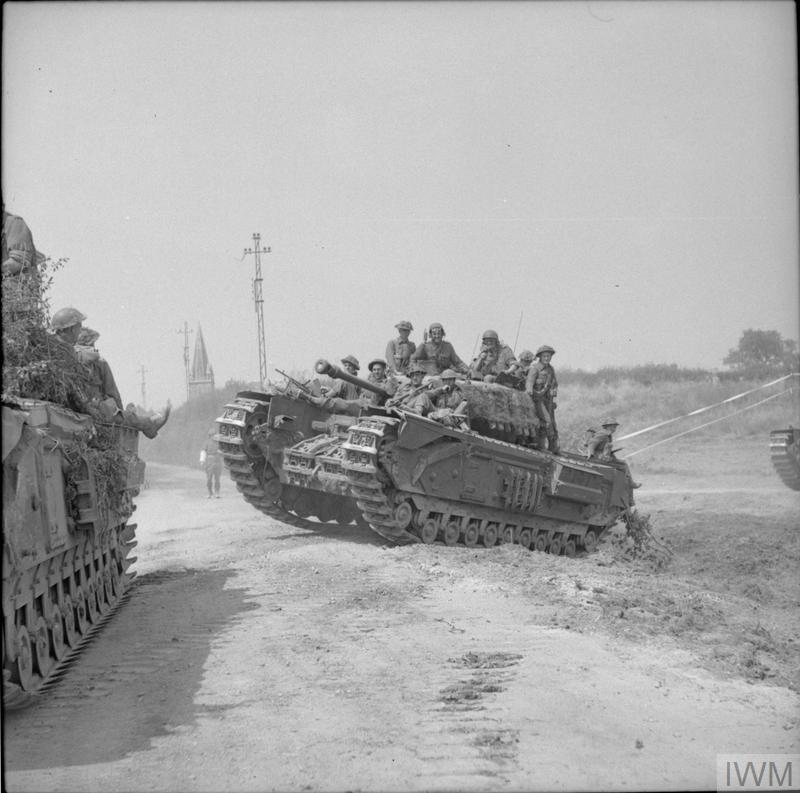
Churchill tanks carrying infantry pass through St. Martin des Besaces, 3 August 1944. - IWM (B 8565)

Churchill tanks of 6th Guards Tank Brigade carrying infantry during the advance across the Orne, Normandy, August 1944. A headquarters Humber scout car can be seen in the foreground. - IWM (HU 104163)
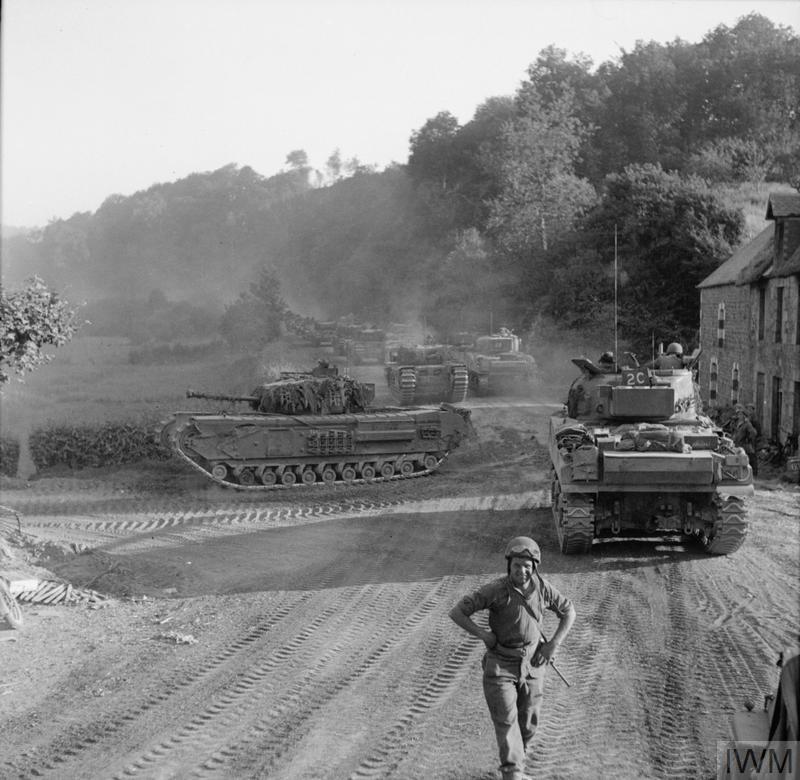
Sherman tanks heading south pass a column of Churchills of 4th Grenadier Guards, 6th Guards Tank Brigade, as they turn east near Cathéolles to advance towards Vassy, 4 August 1944. - IWM (B 8600)
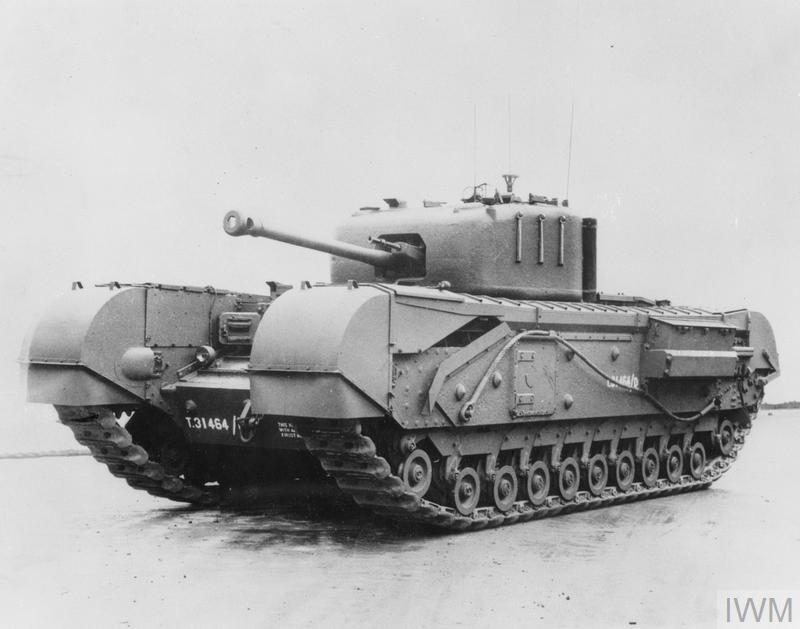
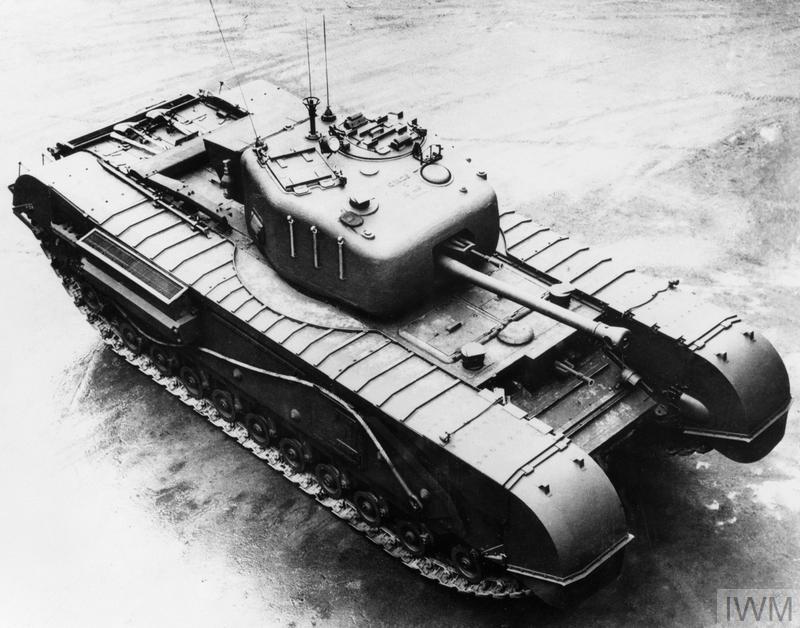
IWM (KID 1265) + IWM (KID 4709)
Sources
The Churchill Tank - C. Shillito, S. Osfield
British Battle Tanks - David Fletcher
Churchill Tank Vehicle History and Specification - David Fletcher
https://www.youtube.com/watch?v=_-mQlONM1xk&t=3s - Tank Chats #118 | Churchill Mark IV & V | The Tank Museum
https://www.youtube.com/watch?v=zIBCNOnB6v0 - Tank Chats #119 | Churchill Mark VI and VIII | The Tank Museum - also covers the Mk. IV (75mm)
https://www.youtube.com/watch?v=DXH1vAT8VC8 - Evolution of The Churchill Tank | “No Damn Good”? | The Tank Museum
Churchill tank - Wikipedia
